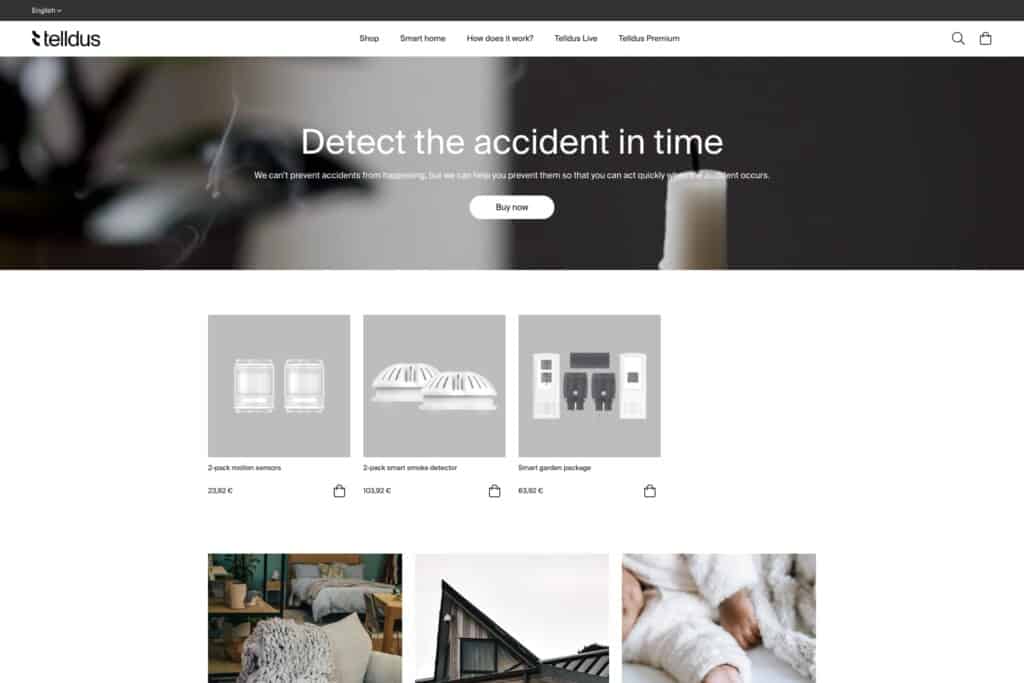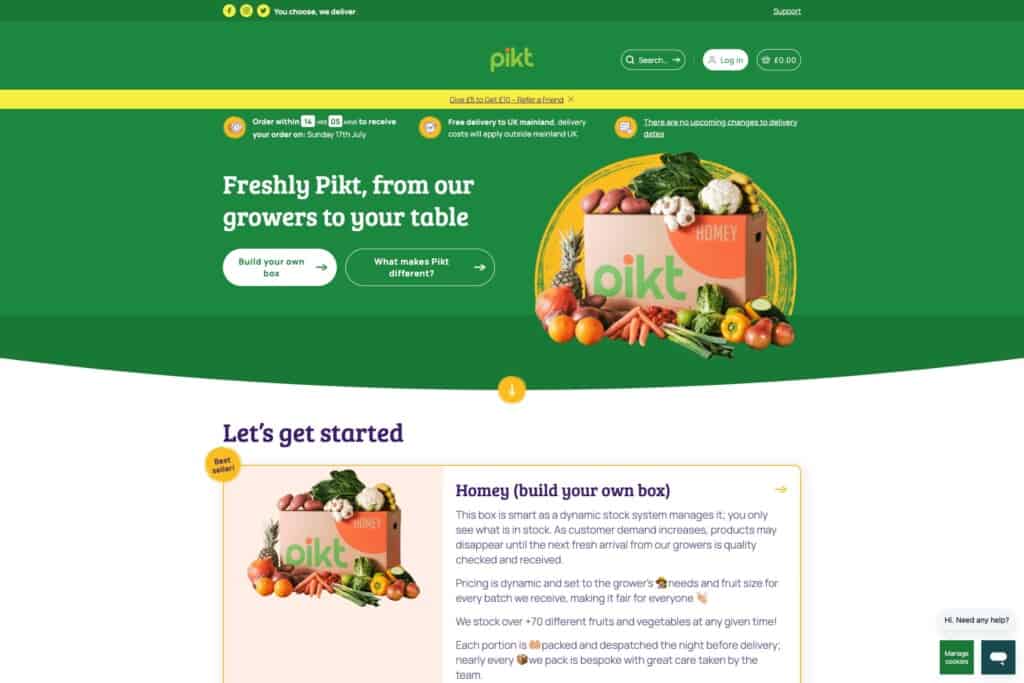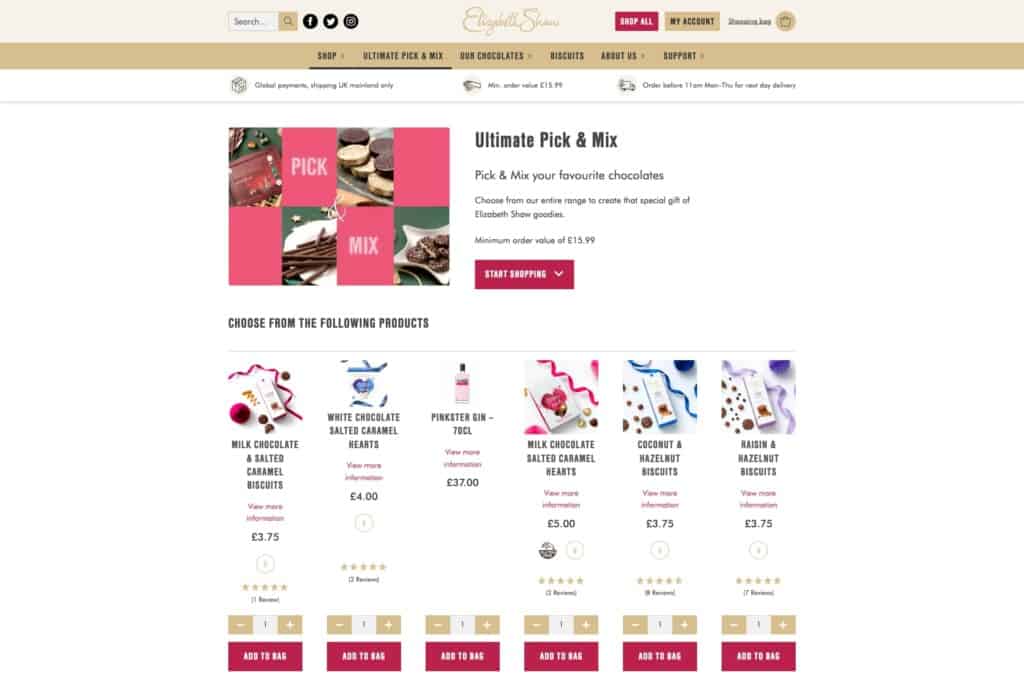Care more about your customers and they’ll care more about your brand
Customers these days want to feel seen and understood, and companies that are able to do this are most likely to see returns on investment.
The eCommerce sector has evolved rapidly in the past few years, and customers’ expectations have evolved along with it. It’s no longer enough to build a static website and expect it to deliver results.
Customers are holding businesses to higher standards when it comes to delivering personalised experiences whilst still respecting their privacy and keeping their data secure.
Emotion plays a large part in their decision-making — 80 percent emotional, 20 percent rational, to be exact. It’s important to remember this ratio and adapt your digital strategy accordingly.
Businesses operating in today’s marketplace need to be constantly adapting their digital presence based on what your customers tell you that they want and expect.
With that in mind, here are some ways you can make your customers feel heard:
-
Know your purpose and brand values
-
Work to make customers feel heard and appreciated
-
Create content that starts conversations
-
Make it easy for customers to engage and buy from your brand
-
Balance personalisation and privacy
Read more like this
Sign up for monthly insights straight into your inbox!
Know your purpose and brand values
When customers trust you, they’re more likely to invest in your brand, tell others about your brand and defend your brand against negative opinions.
Recent research by Stakla found that 88% of consumers consider authenticity important when deciding which brands they give their support to. Every digital touchpoint is an opportunity to earn their trust.
Companies that are able to gain a customer’s trust (and keep it) will see this reflected in their bottom line. According to PriceWaterhouseCoopers:
- Nine out of ten (91%) customers will shop with brands they see as trustworthy
- 14% would spend more with companies seen as trustworthy
Gaining trust from your eCommerce shoppers
How do you gain a customer’s trust? By delivering on promises and being consistent. In business terms, this looks like:
-
Knowing what you stand for
-
Speaking your customers’ language
-
Having existing customers vouch for you
-
Telling your brand story authentically
Knowing what you stand for
Having a clear purpose and brand values is important, but so is the way in which you communicate them. This isn’t just about getting youre marketing copy right, although that is also an essential part of it. Your brand values should also be reflected in your site’s design and layout.
An example of this is our client Sawday’s, a website dedicated to slow travel. A certified B Corp with a strong focus on ethical, sustainable travel, their values were a key selling point that set them apart from competitors.
As part of our monthly Always Evolving work for them, we added modules with text on them detailing their selling points that could be attached to different areas on their site, such as a dark teal coloured banner on the bottom of the mega menu.

Speaking your customers’ language
Customers are more likely to trust websites that have information available in their native language. Swedish home automation brand Telldus runs their multilingual online store on WooCommerce.
The site was created by fellow WooCommerce experts Wallmander & Co who created a custom theme that integrated with their systems and product information pages to provide a seamless user experience regardless of where they’re shopping from.

Having existing customers vouch for you
Despite the popularity of influencer marketing, only 10% of consumers surveyed by Stakla consider it authentic. What proved most popular was user-generated content (UGC).
Online furniture store Wayfair incorporates UGC into their marketing strategy through the use of the hashtag #WayfairAtHome. Users post pictures of Wayfair products in their homes with the hashtag, Wayfair then reposts the photo with a link so their followers can shop for the items.
Telling your brand story authentically
This looks like having clear, consistent and accurate information available across all channels. It seems like an obvious one, but it can sometimes be a challenge when your business is made up of several different teams.
For our client—fruit and veg box delivery service, Pikt—this meant ensuring that their WooCommerce site and social platforms only showed items that were actually in stock, and being clear about the terms of any promotions they offered.
Pikt wanted an agency that could help them grow their business and also improve their customers’ online experience. We helped them do this by setting up an automatic adjustment feature in their checkout process so items that weren’t available would not be added to the order.
We also made it easier for customers to opt for bundles and subscription services, increasing their retention rates.

Conversely, losing the trust of your customers can also impact revenue. 71% of customers surveyed by PriceWaterhouseCoopers were less likely to buy from a company that lost their trust.
Work to make customers feel heard and appreciated
The rise of social media and mobile apps means that companies have access to more data than ever about how customers feel in real-time. It also gives businesses an opportunity to respond to this feedback. This can look like:
- Adapting your messaging on different platforms
- Providing customer support across multiple channels, including social media
- Conducting market research
- Paying attention to industry insights
- Using insights gained from website analytics
Holding multiple conversations across different platforms while still remaining consistent and authentic can feel like a challenge.
However, businesses that are able to manage this successfully will gain valuable insights into their customers, which can then be used to deliver better experiences and lead to higher conversion and retention rates.
Having a well-thought-out strategy for optimising conversions and increasing your customers’ average order value (AOV) will boost your ROI.
Getting a clear view of your data
In order to create strategies that work, you first need to get access to the right data.
Analytics tools are crucial for achieving this and often shed light on the discrepancy between what customers say they want and how they actually behave when interacting with your website.
Having access to this information means you can test out different layouts and functions to see what delivers the best results.
Metorik is an all-in-one analytics solution designed for WordPress and WooCommerce:
- Provides a real-time dashboard view of your site’s performance
- Enables you to capture the data that is most relevant to your needs
- Allows you to track and analyse abandoned shopping carts, then follow them up with email reminders
Keeping the attention of your customers
Once you have managed to get a customer’s attention, keeping it requires a different range of strategies. Loyalty programs and subscription models are commonly used tactics.
Nearly two-thirds of consumers (64%) feel more connected to companies they have subscriptions with as opposed to those they’ve made one-off purchases with.
A key part of this is choosing a platform that allows you the flexibility to experiment and adapt in line with changing customer needs.
WordPress andWooCommerce are great platforms for this, with a large their range of plugins that can be easily added or removed from your website, plus open-source technology allowing the global developer community to constantly build out improvements.
With many options to choose from, it is helpful to seek expert guidance. At Atomic Smash, we’ve been working with WordPress for over a decade.
We can help you evolve a WordPress site so that it lives up to (and exceeds) your customers’ expectations time and again, with room for you to adapt and extend easily.
Grow your website with your business
We can help you evolve your website so that it can grow with your business. Find out more about our Always Evolving service model.
Content that starts conversations
Every step of the customer journey relies on having content that is timely, accurate and relevant. Utilising content-driven commerce as part of your digital strategy can be an extremely effective way to build customer loyalty.
Great content should provide value to the customer while also having an authentic voice that builds trust in your brand. It should solve a problem a customer has in a way that’s easy to engage with.
Blogs, how-to articles and industry insights can serve this function while setting your brand up as a source of expertise, which further builds trust.
Benefits of content-driven commerce include:
- Increased brand awareness
- Increased rate of conversions
- More trust in your brand
- Boost organic traffic
- Deeper understanding of your customer base
Make it easy for customers to engage and buy from your brand
In 2022, the average consumer attention span is 8 seconds. Consumers these days are more likely to be browsing your site on mobile devices, and those browsing on desktop computers or laptops are likely to be switching between multiple tabs.
On one hand, this means there are more opportunities to get their attention. However, it also means a greater amount of competition for their attention, both on and offline.
Creating a site that stands out will help you stay ahead of the competition. Customers browsing on your site while they’re going about their everyday lives are more likely to be attracted to sites where minimal effort is required to make purchases.
Delivering a frictionless digital experience will lead to higher customer satisfaction and higher growth. Harvard Business Review found that businesses that achieve consistently high customer satisfaction ratings grow at 2.5 times the rate of other companies.
In order to achieve this, businesses must be constantly staying up to date with technological advances that will deliver the experiences that their customers expect from them.
Stay ahead of competition
We pride ourselves on our ability to keep up with industry trends. Find out how we can help you do the same.
Balance personalisation and privacy
Nobody enjoys feeling like they are just a number — your customers will be no exception to this.
Customers are increasingly expecting their digital interactions with businesses to be personalised according to their preferences. Advances in machine learning and artificial intelligence mean that this is possible in a way it has never been before.
Research by Epsilon Marketing found that 80% of consumers are more likely to buy from a company that remembers their details and shows them content based on their interests and purchase history.
Giving your customers personalised shopping experiences can help build trust in your brand — but only if they’ve consented to sharing their information in the first place.
Personalisation takes many forms
Having a personalised customer experience is also more likely to result in repeat purchases, as customers are shown products that they have bought before or that complement their previous purchases.
Personalisation can come in various forms. For sites that are often used for gifting, you could even allow the shopper to create their own bespoke bundles of products, for greater choice.
This was something we recently helped boutique chocolate brand Elizabeth Shaw achieve through their website. We worked closely with their team to create bespoke bundles that offered their customers greater choice and flexibility.
We also fine-tuned their customer journeys to avoid users dropping off the site. Instead of hitting dead ends or leaving completely, they are showed products that may fit their needs better.

Striking the right balance between personalisation and privacy is crucial for building trust, as consumers become more aware of how their data is being used. Studies have found:
- 54% of consumers have reservations about trusting online businesses with their data
- 65% stopped buying from sellers who engaged in suspicious practices with data
- 84% cared about privacy and wanted more control over the data
- 80% would take steps to protect their data
Along with this increased awareness comes changing legislation. The introduction of the General Data Protection Regulation (GDPR) in the EU in 2018 gave more rights to individuals whose data had been collected.
Companies trading with the EU had to comply or face hefty fines. Many organisations had to adapt quickly and come up with new processes for handling customer data that previously didn’t exist.
Takeaways
Expectations around digital platforms have changed drastically and will continue to change.
In order to stay ahead of competitors, businesses should be engaging with their customer base to learn what they see as the best possible experience, and then delivering it.
- Customers in today’s marketplace expect personalised experiences
- Hosting your online store on WooCommerce allows you to make changes easily depending on customer needs
- Consumers don’t trust brands easily, but when they do they are likely to spend more and more often
- If customers share their data, make sure you keep it secure
Experts in website evolution
As a WordPress VIP Silver Agency Partner and Platinum Certified WooExperts, we can help you to evolve your site into a sophisticated, scalable platform that gets results for your business.